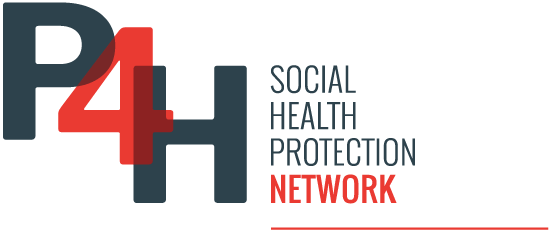As countries around the world respond to the COVID-19 pandemic, their focus is on organizing and reconfiguring health service provision, e.g. testing arrangements, home care and increases in Intensive Care Unit (ICU) bed capacity, in order to meet the changing population needs. At the same time, they must guarantee the provision of health care services for non-COVID-19 patients. WHO has developed technical guidance on COVID-19, which can be found here. A key challenge is that responding to the pandemic entails increased costs beyond previously planned budgets for the health sector, and most systems cannot simply absorb these. Governments have to reprioritize and provide additional funding for the Ministry of Health and other purchasers of health services, such as health insurance funds, to respond to the additional and urgent health care needs.
Purchasing arrangements play an important role in facilitating and supporting the adjustments in service provision that are arising due to the pandemic, for both COVID-19 and non-COVID-19 health services. It is also critical to ensure financial viability of health service providers. Importantly, any changes in the purchasing arrangements must be undertaken in alignment with the service delivery strategy in particular.
By the Health Financing Team at WHO’s Headquarters and Regional Offices
In this blog, we propose 5 critical purchasing actions to support the response to the COVID-19 crisis.
1. Ensure that public funds are effectively translated into the provision of Common Goods for Health by appropriate purchasing arrangements
Public health functions and population-based services, such as comprehensive surveillance (including laboratories), data and information systems, regulation, and communication and information campaigns need to be in place, prioritized and scaled up to respond to the pandemic. Sufficient public funding for common goods for health must be ensured. The critical issue is to translate these resources into actual delivery and implementation of common good for health functions. Above all, these resources need to reliably and quickly reach the relevant agencies and actors in charge of these functions and activities. The predominant purchasing arrangements are budget allocations to public institutions, and any barriers to full and rapid budget execution need to be removed. In turn, this means that effective functioning of PFM systems is the key enabler.
To implement the enhanced basic infection prevention and control measures needed to manage COVID-19 safely, health facilities require additional payments. Other activities, such as contact tracing and testing in laboratories, are delivered by a multitude of providers, including private sector providers and NGOs as well as local (health) authorities. This calls for context-specific purchasing arrangements and payment methods so as to capacitate and set appropriate incentives for providers to deliver these services. Finally, performance contracts can be useful to set targets and accountability mechanisms are essential to complement purchasing arrangements.
2. Expand benefits and inform the public with clear simple, messages
The benefit package may need to be clarified or expanded to ensure that personal health services related to COVID-19 are covered, for example by adjusting the positive list of services, related treatments and diagnostics. These changes are ideally mandated by legal provisions such as a decree.
As we argued previously regarding priorities for the health financing response to COVID-19, in order to ensure financial access to COVID-19 care, all co-payments / user fees for all patients need to be suspended for a defined period of time. This should also apply to voluntary health insurance coverage. For example, in Vietnam, COVID19 related treatment is paid by the government budget and testing is free for everyone. In South-Africa, COVID-19 testing is free in public hospitals. Additional resources are needed to compensate providers for lost user fee revenues to keep them operational. Forgone care or inadequately funded health facilities undermine the public health measures that must be implemented to respond effectively to COVID-19.
Public communications and information efforts are absolutely critical to this action. Health workers and the general public need to know about the (COVID-19) entitlements. Government, the Ministry of Health, health insurance funds or health purchasers need to clearly specify and include in their risk communication strategy, public announcements and social media which benefits are guaranteed and free of charge to avoid confusion.
3. Adjust payment methods and rates to new service delivery arrangements and ensure continuity in funding flows to health care providers
Where providers, especially hospitals, are paid on the basis of outputs (e.g. fee-for-service or case-based payment), they are likely to suffer from severe cash flow problems and revenue losses due to postponement of elective and other non-urgent medical care. At the same time, facilities are faced with increased expenditure and costs (e.g., higher input prices, purchase of additional equipment and supplies, breakdown of international supply chains, higher staffing needs, etc.), which cannot be paid from regular revenues.
First, systems need to quickly provide additional funds to hospitals as well as to PHC facilities, and managers must be empowered to use these funds in a flexible way to compensate the losses and adjust to changing health care needs. Where facilities have been paid retrospectively based on claims through fee-for-service or case-based payments, this calls for a shift to advance payments (e.g. providing a budget upfront against anticipated claims based on some increase over historical utilization levels). For examples, in the Philippines, PhilHealth has prepositioned an equivalent of 90 days of historical daily benefits payments and provided this to accredited hospitals and other health facilities. In Hubei province, China, advanced cash payments have been made by insurance funds to health facilities. More details on how to budget for the COVID-19 response and related adjustments of public financial management rules can be found here.
Second, purchasers need to amend payment methods and rates to incentivize existing as well as the adoption of new delivery arrangements, such as home based or outside hospital care, new forms of testing and especially teleconsultation. In several countries, practically over-night, payment methods to remunerate teleconsultation were introduced. For example, the Belgian National Institute for Health and Disability Insurance has introduced two new service codes for doctors’ teleconsultation regarding COVID-19. Related thereto, it is useful to encourage the acquisition of the respective technology for teleconsultations needed by providers, e.g. online appointment and videoconferencing software. Financial incentives can play a supportive role for this purpose.
Modified payment arrangements are also required to allow for and increase the number of ICU beds, coupled with clarification regarding how the hospitals are to be contracted and paid for these services. In Germany, a flat bonus payment of € 50,000 is provided to incentivize the conversion of hospital beds into intensive care beds. Moreover, reimbursement to hospitals and other providers has to adjust for decreases in demand in other areas, i.e. when keeping ICU beds free for COVID-19 patients by postponing elective care. Finally, countries with payment systems that include a pay-for-performance mechanism may have to review and adjust performance targets to ensure appropriate care is provided and incentives are adapted to the new service delivery arrangements.
Additional funds will also be needed to ensure and incentivize availability of medical staff and to reward their dedication to work in a high-risk environment and to do longer shifts. For example in France, a special bonus on top of overtime payment to compensate staff was introduced for their dedication and for the risk they are taking to respond to the COVID-19 crisis. On the other hand, certain groups of individual surgeons and health professionals will have reduced income due to postponed elective care, and ways to compensate them may have to be found in some countries.
4. Use private sector capacities where needed
Private sector provision in the for-profit and not-for profit sector is widespread and very diverse across many countries for diagnostics and for both outpatient and inpatient care. As countries try to surge capacity for the COVID-19 response, the potential contribution of private providers must be explored, including their potential roles and responsibilities as part of the national effort. Broader guidance on the engagement with private providers can be found here. This may require quickly developing (simplified) contracting protocols and adjusting public financial management rules. It also requires the specification of registration and empanelment criteria, payment arrangements and rates as well as accountability mechanisms to ensure private providers abide to treatment protocols, standards and a no-cost-sharing policy. In Nigeria, for example, private (and public) providers can provide treatment to COVID-19 patients after they have been assessed by the COVID-19 Accreditation Committee under the Federal Ministry of Health. In Estonia, testing capacity in the private sector has been quickly contracted to scale up overall testing capacity.
5. Establish governance arrangements for accelerated decisions-making and set clear reporting standards
Faster purchasing decisions for the COVID-19 response require effective governance arrangements. Clear rules and mandates for decision-making across government agencies as well as between different government levels during the emergency response are crucial, and there may be need to modify procedures to accelerate decision-making.
It is of paramount importance to ensure a coordinated and harmonized response to the crisis across purchasers and government actors (Ministry of Health, Social Health Insurance, Voluntary Health Insurance, etc.), as well as with respect to private providers. This may require establishing a coordination body. The objective is to minimize and avoid disparities in COVID-related benefits and to extend benefits to uncovered population groups. Decisions will need to be made about which funding streams will cover which services as part of the response, on care coordination and referral rules, pricing and harmonized payment rates. State emergency laws or public health laws often will provide such rules, or else countries need to introduce them, with a key role for the ministry of health.
A unified database with up-to-date information from purchasers, such as the number of suspected and confirmed cases as well as details on care pathways and treatments provided, is instrumental in coordinating and adjusting the COVID-19 response. Data acquisition is however often fragmented and ill-coordinated. For population-based planning, governments need to harmonize or establish clear reporting and recording standards across different purchasers to ensure coherence in reporting, to monitor service provision and to have relevant and sufficient information to take purchasing related decisions to respond to the pandemic. This also requires data collection on all services and on all population groups, including those without any explicit health coverage.
In conclusion, a strategic approach to purchasing is crucial, as it contributes to the COVID-19 response by keeping providers financially viable, including those providers of services that are postponed during the pandemic, whilst balancing the need to continue providing non-COVID-19 urgent care. Purchasing measures cannot be undertaken in isolation and need to go hand-in-hand with other health financing and health system measures. Adjustments in purchasing also need to align with inter alia service standards and procurement measures to ensure minimum technical criteria for medicines, devices and other technologies. This can also help to avoid falsification. Moreover, health insurance schemes need to find ways to manage delays in contributory payment so that people do not lose their coverage.
Purchasing also provides room for innovation by adapting to changing needs and limitations in patient movement during the crisis. It can also lead to increased efficiency and patient responsiveness of the health sector in the future, e.g. through incentivizing the adoption of new service delivery arrangements, such as teleconsultation. These innovations should be evaluated after the immediate COVID-19 crisis to inform how to make purchasing more effective in the long term.
This product reflects a collective effort by the World Health Organization’s Health Financing Team at Headquarters and the Regional Offices for Africa, the Americas, Eastern Mediterranean, Europe, South-East Asia and Western Pacific. Specific contributors were Inke Mathauer, Triin Habicht, Tomas Roubal, Valeria de Oliveira Cruz, Aurelie Klein, Joseph Kutzin, Fahdi Dkhimi, Camilo Cid, Tamás Evetovits, Bruno Meessen, Juliet Nabyonga, Claudia Pescetto, Agnès Soucat, Susan Sparkes, Tsolmongerel Tsilaajav, Helene Barroy and Hui Wang.

